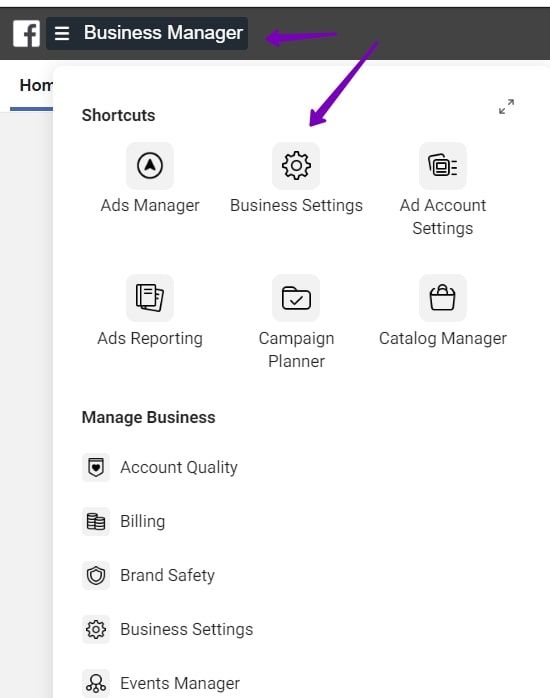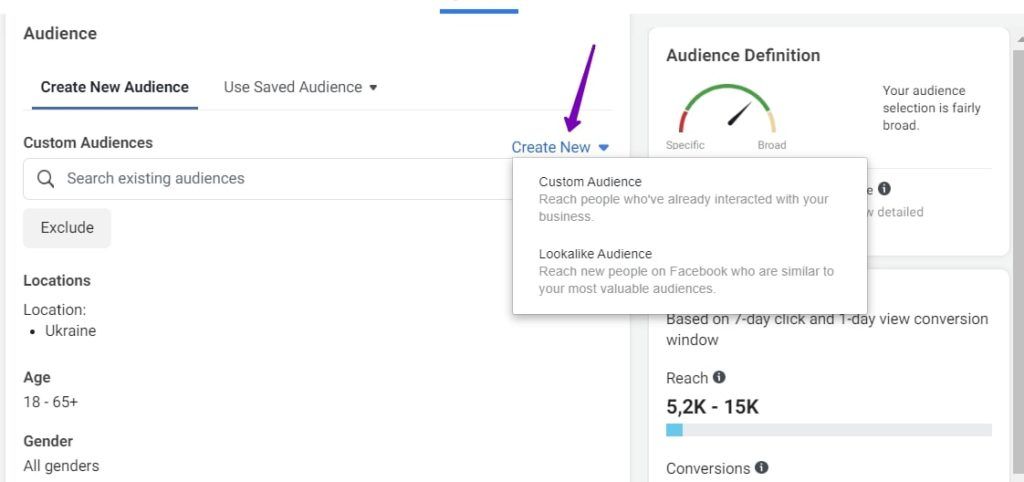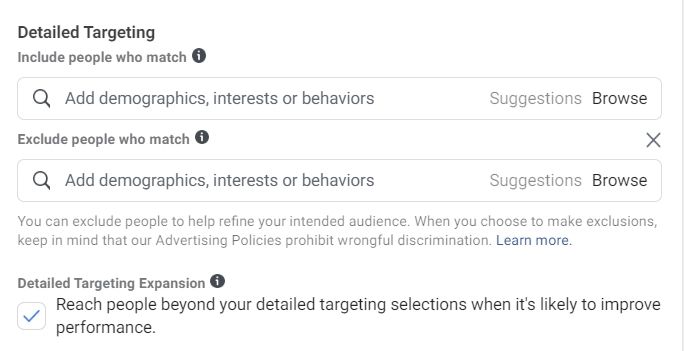Content
Instagram is not only one of the most popular social networks, but also a platform where users search for news, products, services, and recommendations. According to research, over 200 million people visit at least one business profile every day. With such a potential, if you set up targeted advertising properly, quality traffic, and the number of conversions increase comes soon.
In this article, we will analyze how to set up ads on Instagram, tell you about Facebook tools that will help you with this, and also walk through the main features of the Ads Manager.
Acquaintance
Before you start showing ads on Instagram, you should start not from planning a strategy or setting a budget, but from creating an official Facebook account. Why is that? There are two ways to work with targeted promotion on Instagram: promoting posts directly from your profile or fully setting up campaigns in your Facebook Ad account. The first method is suitable if you want to develop an account on Instagram or promote a specific publication, spending a minimum of time on settings. The second option will require more time and skills but will allow you to achieve better results for a big variety of different ad goals.
At the same time, to launch advertising on Instagram, you may not have a profile on the network itself, but if you want it to be displayed on behalf of an official account, create it and link it to Facebook.
How to Run Ads From an Instagram Profile: Settings Features
As mentioned earlier, an advertiser can run ads directly from an Instagram account. To do this, you need to publish the post and click on the “Promote” button, which will appear below it on the right, or select any of the existing posts in the profile, in the “Promotions” section.
After that, you need to specify the target action that you want to receive from the user after viewing your ad. This could be:
- go to profile (good for stores because the user evaluates brand page as a shop window),
- follow the link to the site,
- write to Direc (best for businesses that provide services, such as a manicure or tattoo).
Next, select the audience: by yourself or as suggesting the network. It is better to choose the “Create your own” option, as this makes it possible to set more precise parameters, indicate the interests and age of users, as well as geolocation (of your business or customer’s position). After that, the duration of the campaign and its budget should be determined. Done! Your ad will be shown in the Feed and Stories, as well as in the “Interesting” section.
However, it is important to remember that such targeting won’t be very accurate, and the effectiveness of ad, accordingly, will not reach its maximum. All because of the limited audience settings and the inability to test different versions of texts and images for one ad. For example, you can set interests only in the format “either… or” that is, “running or Crossfit”. Facebook instead of this has the ability to narrow parameters and set them also in a bunch of “and … and”, for example, “running and Crossfit”.
Targeted Aads on Instagram Launching. What to Look For
Before you start setting up your ad directly, you should decide what the budget of the campaign will be. A number of factors affect the optimal advertising cost: brand awareness, competition in a niche, product/service that you are promoting, its price, seasonality, frequency of ad impressions, etc.
Advertising Budget Calculation
There may be several options here. If possible, it is best to run test ads, or even better, multiple ads. After determining your target audience and its preferences, prepare 2-3 different pictures or videos and the same number of text options for ads, indicating different benefits in each. This will help you evaluate what attracts users more. As a result, calculate how much one client costs and how much you managed to earn. Based on this information, you will not only understand the budget for attracting the required number of buyers (price * a number of conversions), but also creatives type that works better.
If you do not have a budget for testing, you can calculate the amount of the ad budget based on the number of sets to test, taking into account financial capabilities. For example, you have $ 2,000 for 30 days, which means $ 66 per day. For 1 ad set, you should set at least $ 5, and preferably $ 10. Accordingly, you can create either more sets with a lower budget or fewer sets with a higher budget, depending on what goals you have. The main thing is to analyze the results and make adjustments in the subsequent campaigns settings.
Ads Media Preparing
When preparing advertising media files, it is worth starting from the ad format that you choose first of all, since each of them has its own requirements. In general, you can use both unique, custom content and stock graphics. The image/video must be of good quality, fit into the overall style of the brand, match the ad text, grab attention, evoke positive emotions, and crucially, work towards your business goals.
We recommend running split tests from several variants of images in order to find the most converting ones.
How to Set Up Instagram Ads with Facebook
As we wrote earlier, in addition to launching ads directly from the Instagram profile, there is a second way – setting in the Facebook Ads Manager. Let’s take a closer look at this option.
Choosing a Business Manager or Ads Manager
To manage Facebook Ads, the system offers Ads Manager and Business Manager. The first tool is used to create, customize and manage ads on Facebook, Instagram, Messenger and Audience Network, and allows you to edit campaigns and ads, set targeting settings, work with the Facebook Pixel, collect data, create audiences and reports, and set up payments. To fully work with one or several advertising companies, Ads Manager has everything you need.
Business Manager is a tool for monitoring and managing the apps, pages, and ad accounts that you need in order to work with Facebook and Instagram ads. It also allows you to manage the access of different people to these resources and take advantage of the large number of opportunities required to create and work with ads.
If you maintain only one profile, without having to deal with many management tasks, Ads Manager is enough. If you have a lot of client accounts or you are a large company with a lot of contractors, then it is better to connect the Business Manager.
Account and Campaign Overview
In fact, setting up ads for launching on Instagram follows the same algorithms and principles as setting up ads for Facebook. We described in detail all the technical aspects of this process, together with an overview of the Ads Manager, in the article “A Step-By-Step Guide: How to Launch Facebook Ad Campaign”.
To get started with Business Manager, you need to add your Instagram account to it. To do this, you need to open the Business Manager, click in the upper left corner of the page, select “Business Settings” and “Instagram Accounts”.

Then click “Add”, specify the username and password, then “Next”. If you need one or more advertising accounts to use your Instagram profile, check the box and click “Save Changes”.
When you start working with Ads Manager directly, you will realize that there is a hierarchy here, which looks like this: campaign, ad set, and ads.
Speaking of campaigns, we mean a goal, because at this stage the advertiser just chooses the goal of the ad, manages the budget, and starts testing. In order not to get confused in your campaigns, it is important to come up with unique names that will reflect their essence. The following goals are available on Facebook:

However, not all of them are suitable for Instagram promotion. The following options are available: Awareness, Reach, Traffic, Engagement, App Installs, Video Views, Messages, and Conversions.
Ad Sets
When working on creating an ad sets, you choose the target – how and to whom your ad will be shown. At this stage, you determine where to drive traffic and set up audiences.
Target audience settings make it possible to determine who will see ads based on gender, age, language, location, interests, behavior, and other characteristics. Here you can set placements, campaign budget, ad format, and schedule.
If you already have Pixel Facebook installed and have collected enough visitor data, you can use that information to run ads to the audience you already have (click Create and then select Custom Audience). But this requires at least 1,000 unique leads. Plus, you can show ads to people who are similar to your customers using the Lookalike Audience tool.

For a more precise setting, you can use the “Narrow audience” option and add a strict condition (to search for users who have all of the specified interests at the same time) or “Exclude people” by removing people with certain interests.

Do not neglect the Audience Size block on the right side of the page. If the arrow is in the green zone, there is enough audience, and if in the red one, remove some conditions, otherwise, you risk getting low Reach.
After that, you can move on to choosing placements. Indicate either “Feed” and “Interesting”, or a Stories on Instagram. Do not forget about choosing the types of devices for displaying, which, together with the operating system and certain models of smartphones (tablets), can be selected in the “Show advanced options” section.

Now, when you’ve chosen the placement, proceed to optimization (the options available depending on the initially chosen goal) and the choice of Bids. If you wish, you can leave it at the discretion of the system, or you can set everything manually, in the “Optimization” and “Bid amount” sections. If you have selected “Conversion” as your goal, you can additionally configure a parameter such as the conversion window. It is determined by duration (for example, 3 days, 14 days) or type of action (for example, click).
Next, it is important to set the start and end of the campaign, the budget (for a day or the entire period) and the time for displaying ads.
One ad campaign can have several ad groups with different target audiences, schedules and budgets.
Ads
So we come directly to the ads. At this stage, the advertiser chooses their format, text, images and prepare links. There are ad 3 formats available for Instagram:
- Carousel (2 or more images and videos with the ability to scroll),
- Single image or video (one image or video, or a slideshow of several images),
- Collection (a group of objects that open in full screen mode on mobile devices).
Recommendations for image/video resolution and size will be available during the media selection process.
After that, all that remains is to fill in all the required fields, put money to the account and send the ad for moderation. Then track the results in analytics and make adjustments according to the data received.
Let’s Summarize
Perhaps some points described above may seem difficult, but this is easily corrected with regular practice. To organize the information, let’s briefly go through the main preparation steps once again, and summarize the algorithm for setting up Instagram ad through Facebook Ads Manager in three steps.
Step 1. Target
Launching any campaign starts with a goal. Determine for yourself what exactly you want to get from ad, what results to achieve and in what indicators it can be counted. And then select one of the possible goals offered by Facebook that best suits your request.
Step 2. Setting Up an Advertising Campaign
When the goal is clear, it is time for settings. Start by defining your target audience, campaign structure, budget, and dates. Set up geotargeting, think about the interests and behavior of your users, use all the available information that can help the system to show ad to the right people.
Step 3. Creating an Ad
Preparing your ad is the final stage of setting up your campaign. This is your appeal to a potential client, so it’s important to make it as relevant as possible. Think over a communication strategy, prepare high-quality visual creatives, don’t forget about working links and correct UTM tags.
Instagram Stories Advertising
Stories is an attractive alternative to targeted feed ads. According to the social network, 500 million personal and business Instagram accounts use Stories every day, which is an impressive audience to reach.
As in the case with the previous formats, you can set up ads for this placement in your Facebook account and directly using Instagram interface. To do this, open the desired story or publish a new one, in the lower right corner, click on the three dots and select “Promote”. Next, proceed in exactly the same way as in the instructions above. Remember that it is not possible to promote old stories, polls, timers, etc. However, you can create a yes-no poll using your Facebook account and run it as an ad in Stories.
Setting up a campaign in Ads Manager requires the same algorithm to the one described earlier with one difference: when selecting placements, uncheck the “Feed” option.
An interesting thing, we would like to mention is that you can run ads in Stories for a subscription using Facebook. To do this, select the Traffic goal, Stories placement and the Subscribe button. Deep links are not used in this case, only a link to an Instagram account. Often this approach gives a good influx of followers, since the Subscribe button is visually more expressive in the Instagram web browser. But do not forget that on Instagram there is no direct tool for attracting subscribers, as in Facebook, and there are no statistics to estimate the number of people who subscribed due to this or that ad. Therefore, it is important to keep track of the total number of followers on the page and it’s dynamics.
Efficiency Analysis
Effective advertising on Instagram is impossible without constant monitoring of the results. The analysis makes it possible to make sure that the ad works, fastly adjust the settings or correct errors, if necessary.
Ads Manager tools and reports are used to evaluate Instagram ads. Performance metrics are available soon after your ads start running. They can be viewed at the campaign, set, and individual ad level. You can also create report graphs, save them, and customize columns.
In the reports, you have access to data on reach, leads, impressions, frequency, clicks, video views, CPC, CPM and CTR, which you should pay close attention to. In addition, there are many other metrics that can be tracked to help improve ad performance, depending on your campaign goals.
Resume
- Setting up Instagram ads is possible both with the application itself and through the Facebook Ads Manager. In the first case, you will have rather limited targeting settings, so if you want to set more precise parameters, use the Facebook ad account. If your goal is to develop an Instagram account, and not conversions or traffic to the site, focus on launching ads directly through Instagram. CPM may be cheaper and CTR is higher. Try both and compare the results.
- After launching an ad, it is important to evaluate its effectiveness using statistics of the available functionality on Facebook and Instagram, or third-party services.
- Don’t collect all audiences, formats, and offers into one ad group. Separation will increase productivity. Divide target audience into segments by gender, age, location and interests, monitor how segments react to advertising.
- For each ad format, prepare your images and videos according to the technical specifications and don’t limit yourself with a few creative options, even if they seem to be successful. The audience gets tired of them and stops responding.
- Remember, you can not only add parameters to your targeting, but also exclude them. If you do not want certain segments to see ads, you can set appropriate exclusions in the settings.
Subscribe to our Messenger chat bot or Telegram channel to stay tuned for the latest information on advertising in social media.
If you have found a spelling error, please, notify us by selecting that text and pressing Ctrl+Enter.












